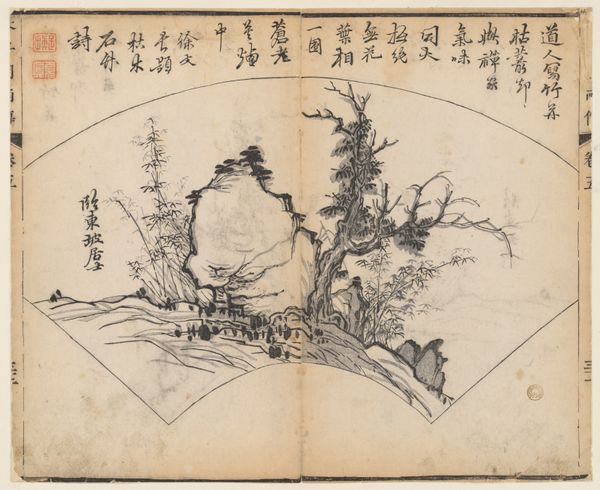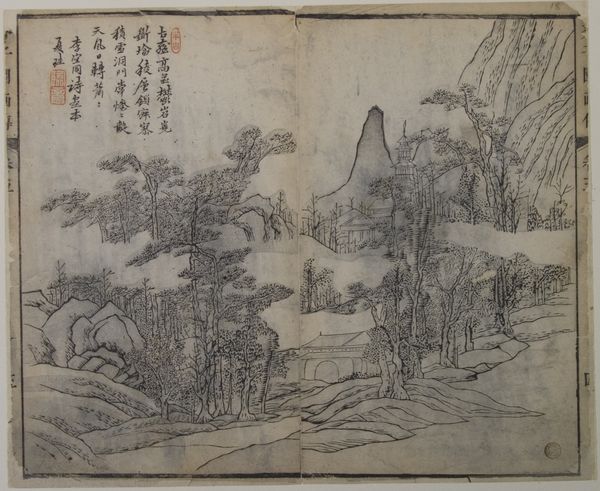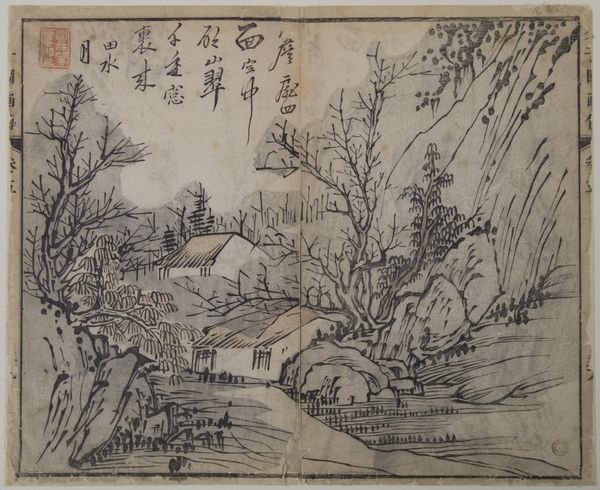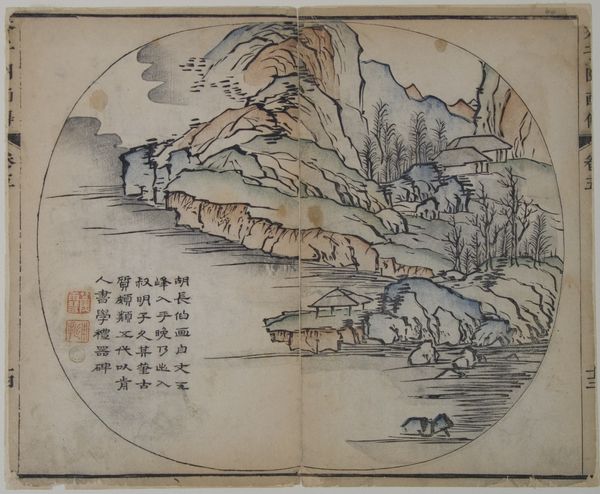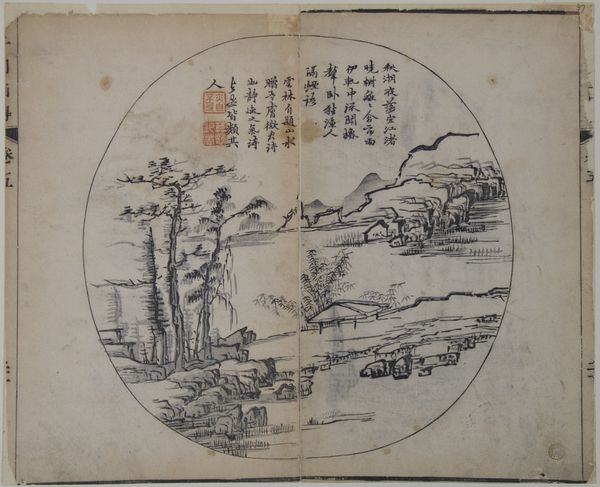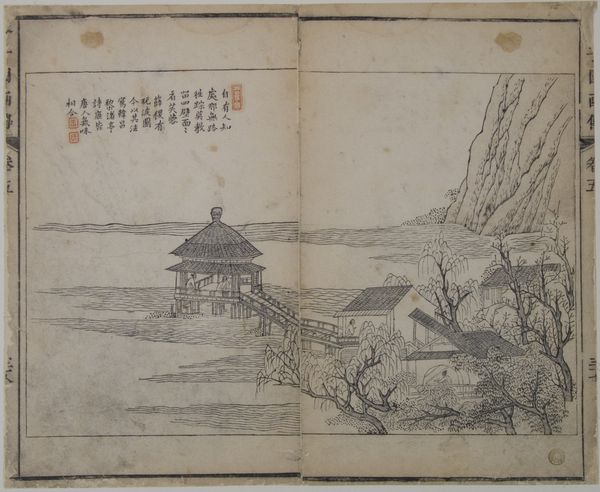
Old Trees by Li Cheng (919–967), as interpreted by Kuncan (1612–1673), from the Mustard Seed Garden Manual of Painting 1679
0:00
0:00
drawing, print, ink, woodblock-print
#
drawing
# print
#
asian-art
#
landscape
#
ink
#
woodblock-print
#
calligraphy
Dimensions: 9 5/8 x 11 13/16 in. (24.4 x 30 cm)
Copyright: Public Domain
Editor: This is “Old Trees by Li Cheng, as interpreted by Kuncan, from the Mustard Seed Garden Manual of Painting," created around 1679. It's an ink drawing and woodblock print. It seems quite desolate, almost brittle, but in a strangely beautiful way. What draws your eye to this piece? Curator: The most striking feature is undoubtedly the composition. Observe how Kuncan, following Li Cheng, arranges the elements within the fan shape. The stark, angular branches of the old trees create a dynamic interplay with the softer, rounded forms of the rocks. Note the negative space; how does that influence the visual weight of the depicted objects? Editor: It makes the trees feel even more isolated, I think. Like they're clinging to the landscape. And what about the figure, almost swallowed up by the scene? Curator: Precisely. The figure, rendered with minimal detail, serves to emphasize the immensity and indifference of nature. This contributes to a sense of loneliness, perhaps even insignificance. Consider the use of line here as well. The calligraphic quality is interesting. What thoughts arise when examining it closely? Editor: It feels intentional, precise even. But how does the 'manual of painting' aspect influence our understanding of the image? Is it meant as an instruction? Curator: Yes, the "Mustard Seed Garden Manual" was intended as a teaching aid. Thus, each element serves as an exemplar of a particular technique or style. Focus on how the artist uses brushstrokes to differentiate the textures of the trees versus the rocks. Note the differing pressure and speed of the marks, almost a lesson. Editor: I see! So, we’re looking at both an artistic expression and a guide to artistic technique. The formal elements work together to convey both emotion and instruction. Curator: Indeed. And through this visual economy, Kuncan not only interprets Li Cheng's vision but also communicates essential principles of Chinese landscape painting, encapsulating history, technique and expression in a single work. Editor: This has certainly broadened my understanding, providing context beyond the immediate visual impact.
Comments
No comments
Be the first to comment and join the conversation on the ultimate creative platform.




